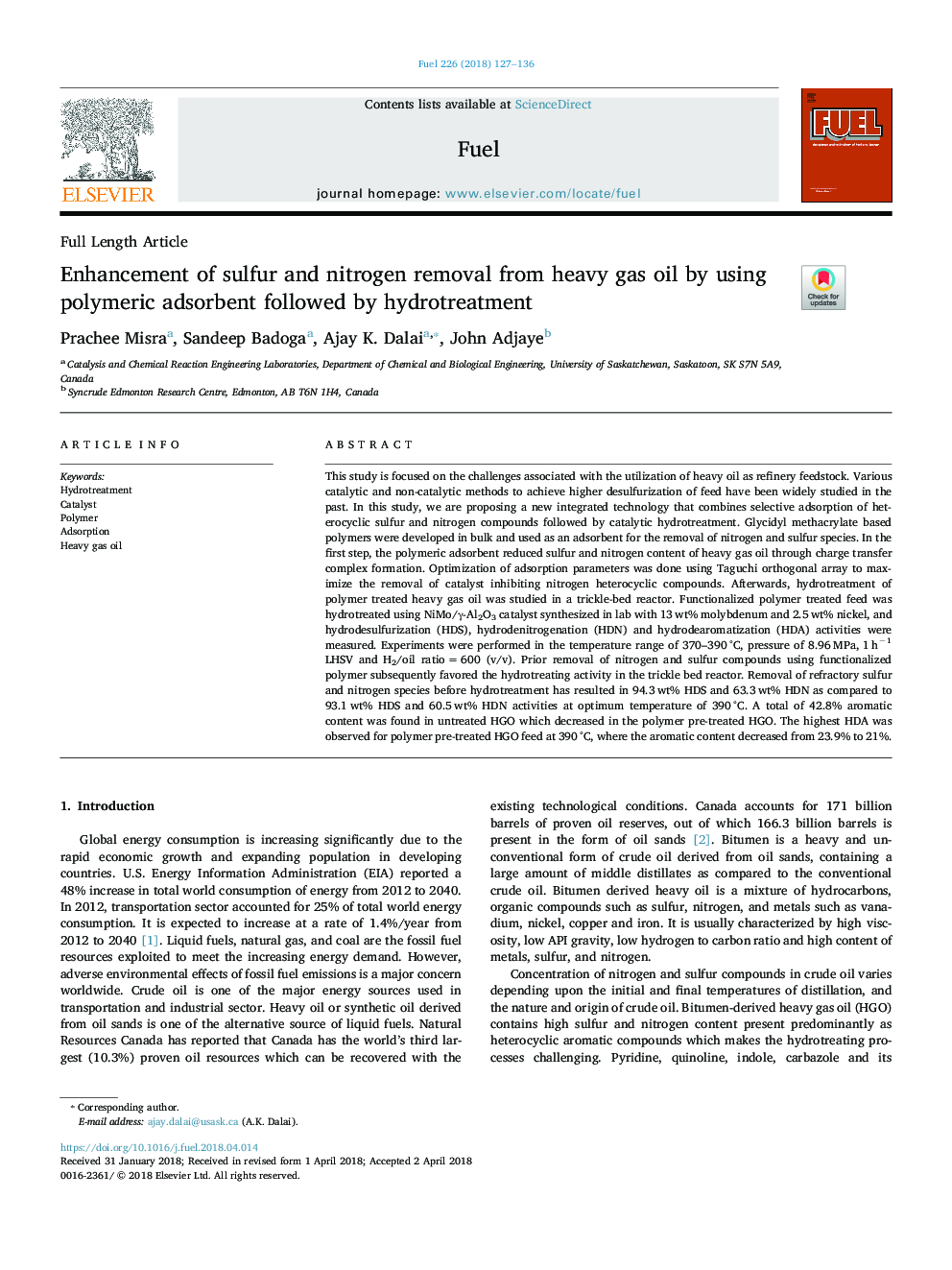| کد مقاله | کد نشریه | سال انتشار | مقاله انگلیسی | نسخه تمام متن |
|---|---|---|---|---|
| 6630873 | 1424938 | 2018 | 10 صفحه PDF | دانلود رایگان |
عنوان انگلیسی مقاله ISI
Enhancement of sulfur and nitrogen removal from heavy gas oil by using polymeric adsorbent followed by hydrotreatment
ترجمه فارسی عنوان
افزایش گوگرد و حذف نیتروژن از نفت سنگین با استفاده از جاذب پلیمری و پس از آن، هیدروکربوری
دانلود مقاله + سفارش ترجمه
دانلود مقاله ISI انگلیسی
رایگان برای ایرانیان
کلمات کلیدی
هیدروکربوری کاتالیزور، پلیمر جذب، روغن های سنگین
موضوعات مرتبط
مهندسی و علوم پایه
مهندسی شیمی
مهندسی شیمی (عمومی)
چکیده انگلیسی
This study is focused on the challenges associated with the utilization of heavy oil as refinery feedstock. Various catalytic and non-catalytic methods to achieve higher desulfurization of feed have been widely studied in the past. In this study, we are proposing a new integrated technology that combines selective adsorption of heterocyclic sulfur and nitrogen compounds followed by catalytic hydrotreatment. Glycidyl methacrylate based polymers were developed in bulk and used as an adsorbent for the removal of nitrogen and sulfur species. In the first step, the polymeric adsorbent reduced sulfur and nitrogen content of heavy gas oil through charge transfer complex formation. Optimization of adsorption parameters was done using Taguchi orthogonal array to maximize the removal of catalyst inhibiting nitrogen heterocyclic compounds. Afterwards, hydrotreatment of polymer treated heavy gas oil was studied in a trickle-bed reactor. Functionalized polymer treated feed was hydrotreated using NiMo/γ-Al2O3 catalyst synthesized in lab with 13â¯wt% molybdenum and 2.5â¯wt% nickel, and hydrodesulfurization (HDS), hydrodenitrogenation (HDN) and hydrodearomatization (HDA) activities were measured. Experiments were performed in the temperature range of 370-390â¯Â°C, pressure of 8.96â¯MPa, 1â¯hâ1 LHSV and H2/oil ratioâ¯=â¯600 (v/v). Prior removal of nitrogen and sulfur compounds using functionalized polymer subsequently favored the hydrotreating activity in the trickle bed reactor. Removal of refractory sulfur and nitrogen species before hydrotreatment has resulted in 94.3â¯wt% HDS and 63.3â¯wt% HDN as compared to 93.1â¯wt% HDS and 60.5â¯wt% HDN activities at optimum temperature of 390â¯Â°C. A total of 42.8% aromatic content was found in untreated HGO which decreased in the polymer pre-treated HGO. The highest HDA was observed for polymer pre-treated HGO feed at 390â¯Â°C, where the aromatic content decreased from 23.9% to 21%.
ناشر
Database: Elsevier - ScienceDirect (ساینس دایرکت)
Journal: Fuel - Volume 226, 15 August 2018, Pages 127-136
Journal: Fuel - Volume 226, 15 August 2018, Pages 127-136
نویسندگان
Prachee Misra, Sandeep Badoga, Ajay K. Dalai, John Adjaye,
